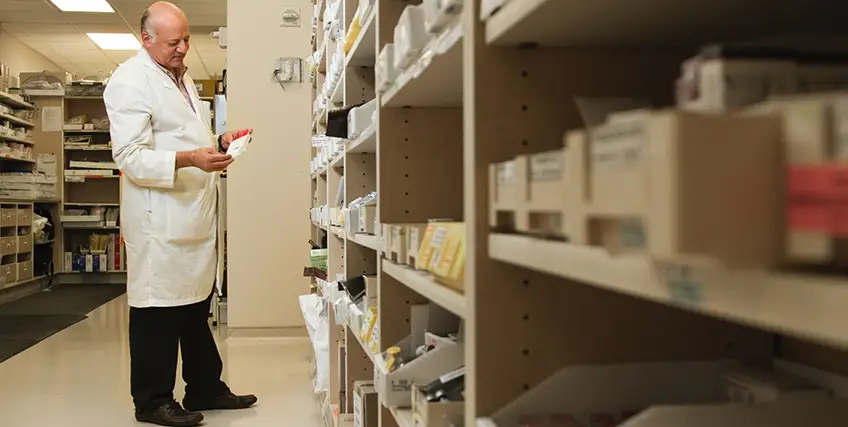4 Tactics to Fill Gaps in Your Medical Equipment (ME) Supply Chain
January 3, 2025 | Last Updated on: January 3, 2025

When you work in healthcare operations, it’s always important to ensure your doctors, nurses, and other staff members have the medical equipment they need to protect themselves and properly treat patients. Most of the time, this isn’t an issue. But when natural disasters hit or there’s a strike at the docks, it can lead to a major disruption in your medical equipment supply chain.
Look at the COVID-19 pandemic—when it hit, clinics, private practices, nursing homes, and other healthcare facilities experienced shortages of various medical equipment, including protective equipment (PPE). This put both their staff and their patients at a much higher risk of contracting and/or spreading the coronavirus.
On a smaller scale, when Hurricane Helene devastated parts of North Carolina, it led to a temporary shutdown of the factory that produces 60% of the I.V. fluid in the U.S. The result was that many hospitals had to postpone surgeries. It doesn’t take much to imagine the devastation that could occur if other supply chains were disrupted.
Both the pandemic and the recent hurricane offer an opportunity to take a deeper look at your current supply chain management practices. Chances are, there are steps you can take to improve your current supply chain management, shore up your medical supplies, and streamline your operations to keep your staff and patients protected.
Here are four tactics you can use to fill gaps in your medical equipment supply chain:
1. Consult with the professionals on the front line
If you work on the operational side of healthcare, you might think you know what supplies your doctors, nurses, and health care workers need to do their job, but unless you’re on the front lines treating patients, there’s probably a lot you don’t know about which medical device your doctor needs or which medical supplies your clinic needs more .
The best way to gather that information is to ask the professionals who are working on the front lines. If you want deeper insights into any gaps in your healthcare supply chain, talk to your doctors, nurses, and other staff treating patients. They can give you real-time insights into how quickly supplies are being used, which supplies they need more of and any issues they’re running into when treating patients.
It’s also important to keep your clinicians informed of any potential shortages or supply chain issues; that way, you can work with your front-line healthcare providers to come up with a strategy to keep them safe—while still providing the high-quality healthcare your patients need.
2. Collaborate with other healthcare facilities in your area
Individual clinics, offices, and facilities generally operate independently. But if there’s a supply chain shortage, you may be able to gain leverage by partnering with other healthcare facilities to get the medical equipment you need. Resource sharing and inter-hospital supply exchanges can be mutually beneficial.
3. Leverage home medical equipment companies
Home medical equipment companies often keep a stock of products that your patients may benefit from. Rather than keeping these on hand in your facility, you can direct your patients to partners in this related industry. They typically carry healthcare equipment like:
- CPAP machines
- scooters
- lift chairs
- blood pressure monitors
- breast pumps
- care supplies
- catheters
- compression socks
- wheelchairs
- commodes
- canes
- CPAP masks
- diabetic supplies
- incontinence supplies
- grab bars
- nebulizers
- oxygen concentrators
- mobility aids
- rollators
Insurance companies may be able to cover medically necessary products from these companies just like they would if they received them directly from a hospital or physician. This makes them a good partner for medical facilities.
4. Think outside of the box to fill in the gaps
Unless you’re in charge of a large hospital system, your ability to influence the medical supply chain is limited; for example, you can’t force companies to increase their manufacturing capability or produce the raw materials necessary for testing. You can, however, make a big impact in filling the gaps in your medical equipment supply chain for your healthcare facility—it just may require you to think outside of the box.
For example, if you are running low on PPE for your front office staff, you may be able to modify your check in process so that patients can wait in their cars. That way, you can reduce the likelihood of disease transmission. Or if you are running short of face shields for nurses and providers, you may be able to find suitable replacements at a local hardware store.
Financing your medical supply equipment
Medical equipment can be expensive, and many facilities may not be able to purchase it outright. Thankfully, you can use medical equipment financing to make the upfront cost smaller, while splitting up the rest of the payments over time. Types of medical equipment financing include:
Medical equipment loans
Medical equipment loans use the equipment you are buying as collateral. This means that you can typically get favorable terms. A medical equipment loan can be used as both new and used equipment financing. However, the value and estimated life of the equipment you are purchasing will define how much you can get with your loan, and how fast you will have to repay the loan, as the financing will not outlast the life of the product.
SBA loans
SBA loans are loans that are partially backed by the Small Business Administration. This decreases the risk for lenders, so they tend to have better terms than other types of loans. On the downside, SBA loans have a more rigorous application process, and it may take longer to get the funding you need. Common SBA loans that can be used for medical equipment are the SBA 7(a) loans and SBA microloans, which can be used to finance up to $50,000.
Working Capital Loans
Working capital loans are short term loans that help businesses cover their operating expenses. These are typically used to fund gaps in cash flow, to purchase things like inventory or payroll, but there may be circumstances where a working capital loan could be used for medical equipment as well.
Business lines of credit
A business line of credit is not a loan. Rather, it is like a business credit card, in that you qualify for a predetermined amount of credit that you can draw on as you need. With a line of credit, you only pay interest on the amount you use, but the interest rate is typically variable. A business line of credit is helpful to have on hand for emergencies, in case you need fast financing.
FAQs about medical equipment financing
What is medical device financing?
Medical device financing is a financial solution that lets businesses buy equipment without paying the full amount in cash up front. Typical financing includes loans and other solutions that let you spread the payment out over time.
How can medical device financing help during a supply chain backup?
During a supply chain backup, you may have your current finances tied up in backordered products. Or prices may have increased significantly, and you need more capital to purchase needed supplies. Medical device financing can help you acquire the equipment you need while the supply chain issue is sorted out.
What should I do if a supply chain backup delays critical medical equipment?
Start by assessing inventory and allocating resources to the most urgent needs. Then look for local partners you can share resources with. Finally, look for alternate suppliers and make sure your staff is clearly informed about the delays.
Are there specific financing options for used or refurbished medical devices?
You may be able to find lenders with financial products specifically targeting refurbished or used medical devices. However, it’s always a good idea to talk to your current lender to see what options they offer. For example, a business line of credit can be used for used or refurbished equipment.
How can healthcare businesses avoid supply chain problems?
To minimize the risk of supply chain problems, consider diversifying your suppliers, investing in inventory management solutions, and building an emergency stockpile of critical resources.




